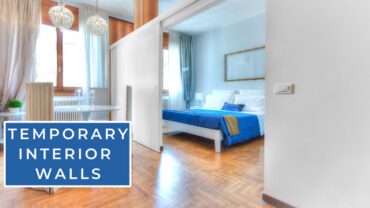Where to Place Acoustic Panels in Living Room?
Have you ever been in your living room and the sound from your TV or music seemed echoey or unclear? This happens because sound waves bounce off hard surfaces. Think about your walls, floor, and ceiling. When sound hits these, it can create echoes and make everything sound jumbled.
This can be annoying when you are trying to watch a movie. Or, it can be hard to hear what people are saying. Good sound makes your living room a nicer place to be. Luckily, there’s a simple way to fix this problem.
Using special panels can help control these sounds. It’s like giving your room a little bit of sound treatment. This can make a big difference in how clear everything sounds.
What Are Acoustic Panels and How Do They Help?
Acoustic panels are special soft panels that you can put on your walls or ceiling. They are usually made of foam or fabric-wrapped fiberglass. Their main job is to soak up sound, kind of like a sponge soaks up water. This stops the sound from bouncing around too much.
When sound waves hit an acoustic panel, they go into the material. The material turns some of the sound energy into a tiny bit of heat. This means less sound bounces back into the room.
This helps to reduce echoes, also known as reverberation. The result is clearer sound for your music, movies, and conversations. It’s a bit like how some people use different types of wood paneling to change a room’s look; acoustic panels change a room’s sound.
Finding the First Reflection Points: The Mirror Trick
One of the most important places to put acoustic panels is at the “first reflection points.” These are the spots on your walls and ceiling where sound from your speakers bounces off first before reaching your ears. It’s like playing pool, where the ball (sound) hits the side (wall) before going into the pocket (your ears).
There’s an easy way to find these spots. It’s called the mirror trick. You will need a friend to help you. Sit in your main listening spot, like your favorite chair on the couch. Have your friend hold a small mirror flat against one of the side walls.
Your friend should slide the mirror along the wall. When you can see the reflection of one of your main speakers (left or right) in the mirror from your seat, that’s a first reflection point! Mark that spot. Do this for both side walls and for both your left and right speakers. These are key places for your first panels.
Walls: Your Primary Sound Bouncers
Your walls are usually the biggest surfaces that cause sound to bounce. So, treating your walls is very important. After you find the first reflection points, these are your top priority spots for panels.
Place acoustic panels directly on these marked spots. This will catch those early reflections and make a big difference in sound clarity. You don’t need to cover the whole wall. Just treating these key areas can be very effective.
Think about other large, flat wall areas too. For example, the wall opposite your main speakers can also be a source of reflections. If your room is large, or if you still hear echoes after treating the first reflection points, consider adding more panels to these areas. Sometimes, if you are thinking about how to separate living room and dining room areas for better sound control, acoustic panels can be part of that solution.
Ceilings: Don’t Forget to Look Up!
The ceiling is another large, flat surface that can cause annoying reflections, especially in rooms with lower ceilings. The mirror trick works for the ceiling too! Lie on your back in your listening position (or have your friend hold the mirror on the ceiling above you) and look for the reflection of your speakers.
Placing acoustic panels on the ceiling at these reflection points can make a noticeable improvement. This is especially true if you have a home theater setup. The sound will feel more direct and less like it’s coming from all over the place.
If you have a very tall ceiling, reflections might be less of an issue. But for most living rooms, treating a section of the ceiling above and slightly in front of your listening area is a good idea. Some people even get creative and make “clouds” of acoustic panels that hang from the ceiling.
Corners: Bass Traps for Low Sounds
Low-frequency sounds, like the deep boom from a movie explosion or the bass in music, tend to build up in the corners of a room. This can make the bass sound muddy, boomy, or uneven. Regular flat acoustic panels are good for mid and high-frequency sounds, but they are not as good at absorbing these low bass sounds.
For corners, you should use special acoustic panels called “bass traps.” These are thicker and denser than standard panels. They are designed to absorb more of that low-frequency energy.
Place bass traps in as many corners of your room as you can. The corners where walls meet are important. Also, the corners where walls meet the ceiling or the floor can benefit from bass traps. Even treating just two corners can help a lot. If you are considering how to build a temporary wall in an apartment, remember that new corners might also need acoustic treatment.
Behind Your Speakers and Listening Spot
Placing acoustic panels on the wall directly behind your main speakers can also be helpful. This helps to absorb sound that radiates backward from the speakers. It stops that sound from bouncing off the front wall and interfering with the sound coming directly towards you.
Similarly, the wall behind your main listening position is another good spot. Sound that passes you can bounce off this back wall and come back to your ears a little bit later. This can make the sound less clear. An acoustic panel here can clean that up.
If you are thinking about creating makeshift walls in your apartment or even temporary interior walls with door, these new “walls” will also have surfaces that reflect sound, so keep that in mind for panel placement.
Other Smart Places for Acoustic Panels
Once you’ve covered the main spots, there might be other areas to consider. If you have large windows or glass doors, these are very reflective. While you can’t put panels directly on the glass, heavy curtains can help absorb some sound.
Think about any large, flat, hard surfaces. This could be a large piece of art without a frame, a bare section of a door, or even a large coffee table if it’s very reflective. Sometimes, placing a rug on a hard floor can also act like a big acoustic panel for the floor.
The goal is to reduce the number of hard, reflective surfaces without making your room sound too “dead” or quiet. You want a balance. Start with the first reflection points and corners, then add more panels if you still hear too much echo or muddiness.
Conclusion: Enjoy Your Clear-Sounding Living Room!
Placing acoustic panels in your living room doesn’t have to be hard. By focusing on the first reflection points, corners, and areas behind your speakers and listening spot, you can make a big improvement. Your movies will sound clearer, your music will be more detailed, and conversations will be easier to understand.
Remember to start with a few panels in the most important spots. You can always add more later if you need to. Listen to your room and let your ears guide you. Soon, you’ll have a living room that not only looks great but sounds amazing too.



